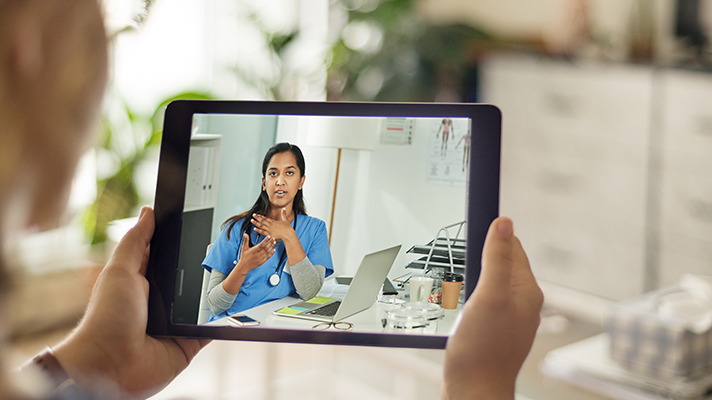Since the onset of the COVID-19 pandemic, regulatory, reimbursement and technological changes have all helped trigger a massive and rapid expansion of telehealth accessibility. At the same time, say industry leaders, vulnerable groups – especially people of color – are being left behind. “Regrettably, minority groups are being left behind by the telehealth revolution,” said David Smith, executive director for the Medicaid Transformation Project, in an interview with Healthcare IT News. The Medicaid Transformation Project, a strategic initiative through the healthcare innovation network AVIA, seeks to promote healthcare availability for Americans in need while reducing the overall cost of services.
Since the pandemic began its spread across the United States this spring, Smith said, MTP has expanded its focus. It has broadened the definition of “vulnerable population” to include elderly people, those with chronic illnesses, people experiencing domestic violence, healthcare frontline workers and others.
“Accordingly, we’ve expanded the aperture of our work with our members and digital health companies to address these populations,” Smith explained. “Further, as payer mix shifts in favor of government-funded programs and the strain on already underfunded programs grows, our work has come to encompass efforts to effectively manage risk in these programs,” he continued.
Even as the Centers for Medicare and Medicaid Services moved to make telehealth more accessible – such as by reimbursing providers for services and allowing care between states – Smith said virtual care is still not available to everyone who needs it. “Telehealth solutions need to be deployed in a culturally competent, equitable way to ensure they reach the communities that need the most support,” he said.
“Tactically, this means ensuring these solutions offer appropriate language capabilities, provide the ability to communicate in multiple modalities (including SMS), and factor in how different cultures interact with the healthcare system, especially healthcare workers,” he continued. Telehealth, on its own, will not be enough to overcome language barriers between clinicians and patients or mitigate the institutional racism patients face from medical providers. This has become especially evident during the COVID-19 crisis, which has disproportionately affected African American and Latinx people in the United States.
“Healthcare organizations need to prioritize vulnerable and minority groups in the early stages of their development of comprehensive digital strategies,” Smith said. “Organizations should start by using data to identify current gaps in care and develop targeted interventions to address those gaps.”
Smith also pointed to the technological innovations being advanced in response to telehealth needs as a vital opportunity to center the leadership of people of color. “Women and minority groups are incredibly underrepresented in the health tech world. This underrepresentation influences the types of solutions that are developed and, in turn, their ability to effectively serve underrepresented communities,” he said.
“We need to elevate the voices of diverse entrepreneurs and develop systemic and wide-reaching ways to support them. This will go a long way to ensuring that the groups who need the most care are able to benefit from the incredible opportunities that stem from digital innovations.” Overall, Smith said, the coronavirus pandemic presents a number of opportunities to make telehealth accessible and financially viable in the long term.
“These policies provide new ways for healthcare organizations to fund these projects, including the FCC’s COVID-19 Telehealth Program, the FCC’s Connected Care Pilot Program, and the USDA’s Distance Learning and Telemedicine Grants,” he said. “Perhaps most importantly, COVID-19 has created a never-before-seen energy around deployment of digital solutions,” he said. “Telehealth is but one part of this broader movement – albeit a big part!”
































